That amazing smell of freshly baked bread alone will make you want to bake this easy french bread over and over again. Especially considering how easy it is to make this bread from scratch.

Table of Contents
In a recent interview with Tina Fey, Ina Garten said that home-baked bread is one thing she could eat for the rest of her life, if she had to choose only one food.
While I can’t say the same (because chocolate!!), I could definitely smell freshly baked bread for the rest of my life, if that’s my only option!
What would be your choices?
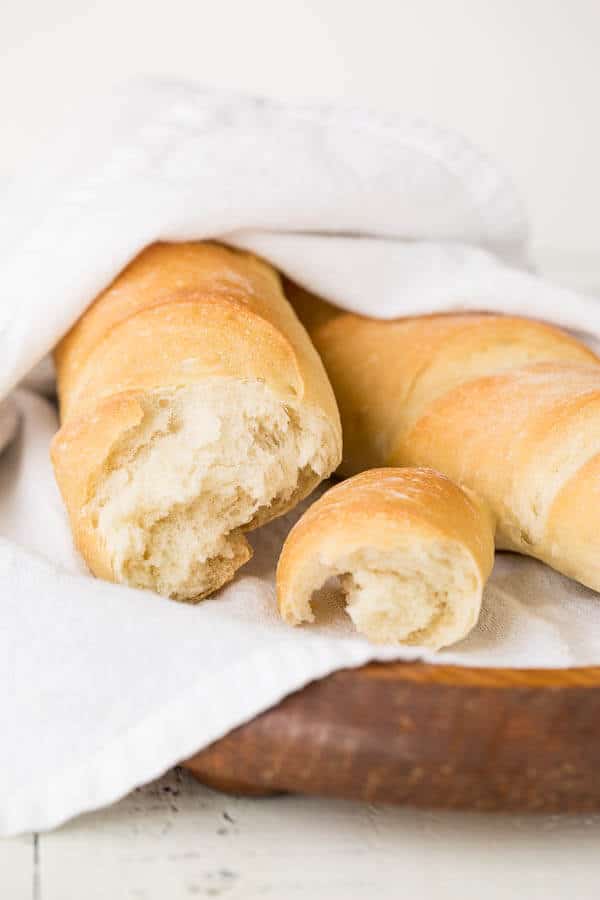
You see that gorgeous bread up there? That’s bread of your dreams, my friend.
Don’t you just want to tear through that crispy crust and dive right into the fluffy soft interior? Oh boy, and imagine how satisfyingly chewy it is too!
Well, guess what? You can make it yourself. In your kitchen. From scratch. With just simple 4 ingredients!
And if you ever afraid of working with yeast, there’s absolutely no reason to. It’s soooo easy.
How to make this bread:
- There’re 2 types of dry yeast: active dry yeast and instant yeast. These two can be used interchangeably, because main difference is that instant yeast helps the dough rise quicker, not by much though. My go-to is Red Star Platinum. (<- not sponsored, just love it.)
- When using active dry yeast, we need to re-hydrate them in warm sugar water. By doing this, we’re making sure that yeast is alive and our bread will rise without issue. So here’s how I do it: dissolve sugar in a glass of warm water (be careful not to use hot water, or it’ll kill the yeast) and then stir in yeast. Then wait for about 10 minutes. If the mixture is foamy, you’re good to go with the rest of the recipe, because foamy yeast mixture means the yeast is alive and ready to get to work!
- Yeast loves and thrives in warm humid environment. So the dough will rise beautifully if you place it in a nice warm place. My secret: microwave! No, we’re not actually microwaving the dough. We’re using it as an insulated box to make a perfect environment for the yeast dough to rise. Before putting the dough in, I first microwave a glass of water for 1-2 minutes to create some steam in there, and then I put the bowl with dough, covered with wet kitchen towel. Voila! Humid and warm place for the dough to rise into fluffy cloud.
- Speaking of bowl, here’s my trick to mess-free bowl later. Oil the bowl before placing the dough in, then turn the dough to coat it with oil as well.
- Freezer is the best place to store yeast. It’ll be fresh and ready to be used for very long time, like a year or so.
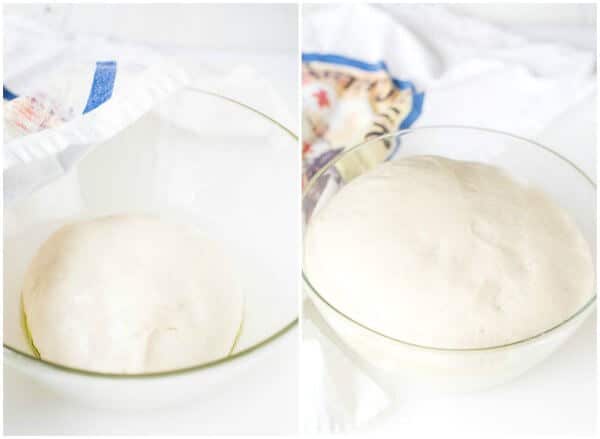
Look at that beautiful rise, all fluffy and soft! Now we’ll punch it down and get all the air out of it. I don’t know why, but it’s the most satisfying thing to do!
To shape the log, we’re using Julia Child’s method, as shown below. Basically flatten the dough and pinch the long edges together, and repeat till desired length.
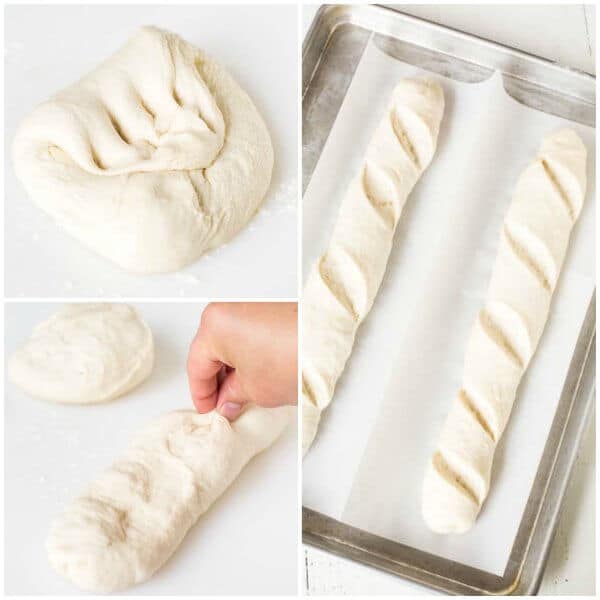
Warning! You’ll be hooked once you try this super easy bread recipe.
Shh, can you keep a secret? My husband thinks I make just one loaf, because that’s all he ever sees. I always eat one loaf fresh out of the oven all by myself before he comes home. Slathered with butter, of course. #cookstreat
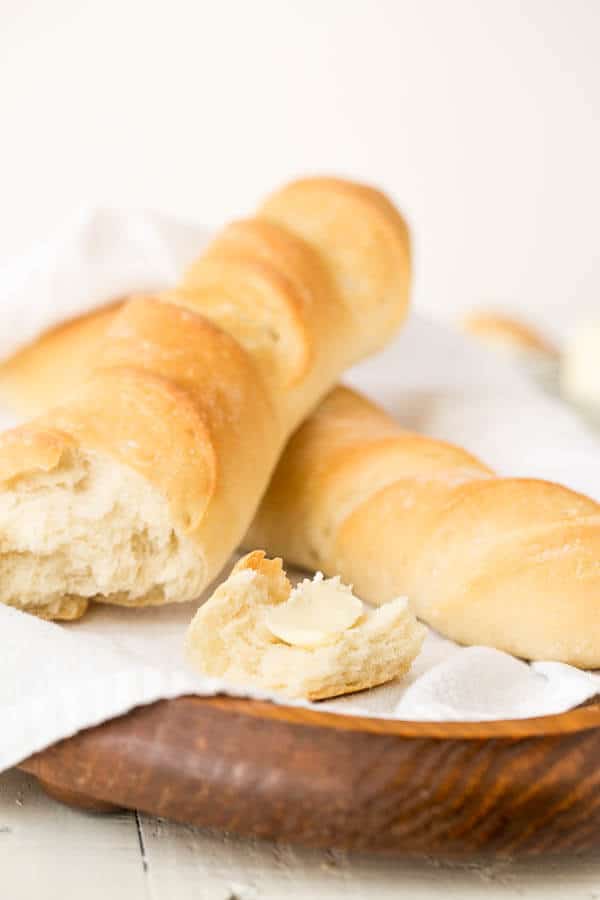
If you’re looking for a gluten free recipe, this easy gluten free bread recipe is a stellar one!!!
Thanks so much for reading.
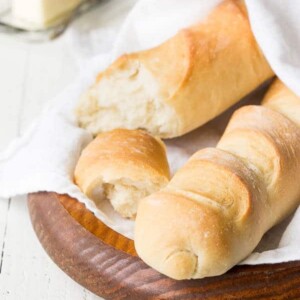
French Bread
Ingredients
- 1 tablespoon sugar
- 1 ½ teaspoons active dry yeast
- 3 cups 375gr all-purpose flour
- 1 teaspoon salt
Instructions
- Dissolve sugar in 1 cup (240ml) warm water. Stir in yeast and let it stand for about 10 minutes. The mixture should become foamy, which indicates the yeast is alive. If the mixture doesn’t foam, that means you have bad yeast, or used too hot or too cold water.
- To make the dough in stand mixer, combine flour and salt in a mixing bowl with dough hook attachment. Add yeast mixture and mix on low speed for 5 minutes. The dough should be soft and not very sticky. (Depending on humidity, you may need to add a little bit more flour, but not much though.) Kneed the dough until it’s nice and smooth. Rest for 5 minutes, then run the mixer on low again for another 3 minutes.
- To make the dough by hand, combine flour and salt in a large bowl. Add yeast mixture and knead until dough comes together into a ball. (Depending on humidity, you may need to add a little bit more flour, but not much though.) Transfer the dough onto lightly floured kneading surface. Knead until form a nice smooth ball. Let it rest for 5 minutes, and then knead again for about 10 minutes.
- Coat a bowl with a little bit of oil. (I use olive oil.)
- Place the dough in the bowl, turn the dough around to coat with oil and cover with wet kitchen towel. Let the dough rise in warm place until doubled in size, for 60-90 minutes. (My secret place: microwave! First microwave a glass of water for 1-2 minutes to create steam in there, and then put the bowl with dough, covered with wet kitchen towel.)
- Once the dough is doubled in size, transfer it onto a lightly floured surface and punch it down. Knead it into a nice smooth ball and divide into 2 equal parts. If you want, you can also divide into 4 parts to make smaller baguettes.
- Slightly flatten each dough and pinch the long edges together per Julia Child’s method, repeat until desired length. See picture above.
- Place the logs on a baking sheet lined with parchment paper.
- Using a sharp knife, make deep diagonal cuts on the loaves.
- Let them rise for another 30-60 minutes.
- Meanwhile, preheat the oven to 400°F (200°C).
- When ready to bake the bread, reduce the oven temperature to 350°F (177°C). Bake the loaves for about 30 minutes, or until the crust is nice and golden.
- Cool on wire racks before serving. Keep the bread at room temperature in airtight container. Right before serving, I like to bake it for 5 minutes at 350°F (177°C) for perfectly crispy crust.
- This bread freezes well too. Place the baked and cooled bread in airtight bag and freeze. When ready to serve, bake for 10 minutes at 350°F (177°C).
Nutrition
This recipe was originally published on June 19th, 2013.
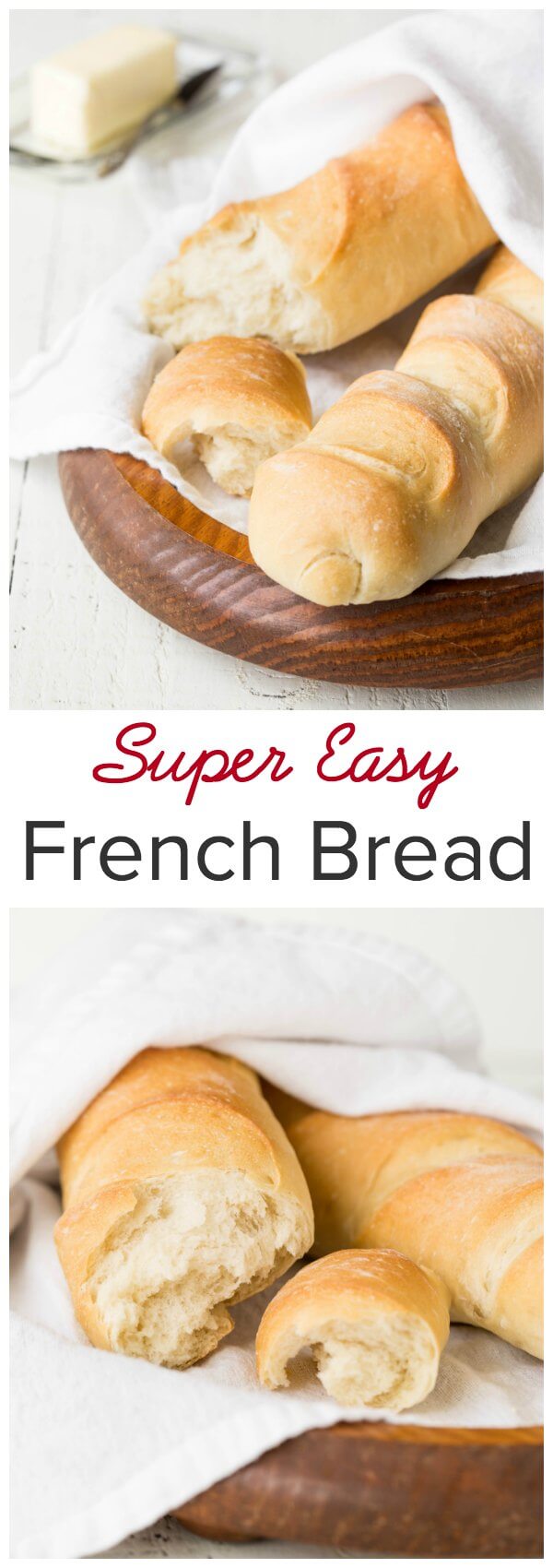
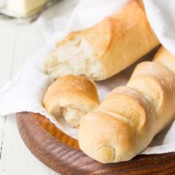



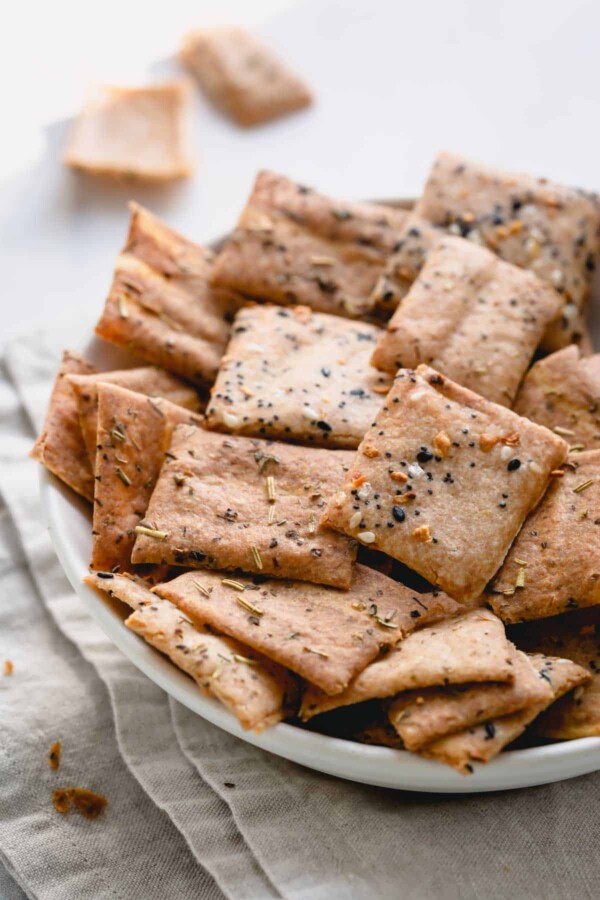


Can I use bread flour instead of AP flour?
Hi, Ruth. Yes, you can definitely use bread flour.